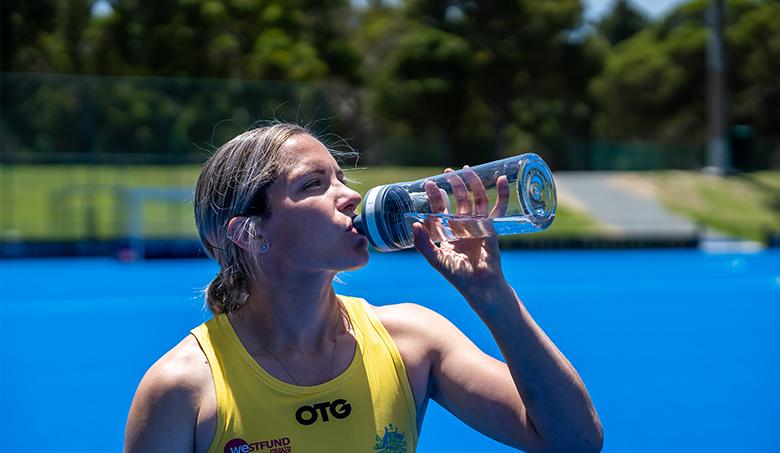Activity 2
Teaching Kids About Water: A Science Lesson on Hydration
Hydration Explorers
Through the Hydration Explorers lesson plan, students will go on a learning journey into the science of hydration and dehydration, explore their vital roles in human health. This science lesson plan is designed to engage upper primary students in understanding the significance of proper hydration through interactive activities and scientific inquiry.
Aligned with the Australian Curriculum science standards, this lesson integrates key learning concepts from the Biological Sciences, emphasising how changing physical conditions affect living organisms. Students will explore the fundamental questions surrounding hydration, from understanding dehydration's effects to designing experiments that explore the impact of hydration on physical performance.
leveraging digital tools, video production, and scientific experimentation, students will deepen their understanding of drinking water benefits and staying hydrated. This comprehensive approach fosters skills in communication and data analysis, empowering students to make informed decisions about their health and well-being.
Upper Primary Science Lesson Plan: Learning Objectives
Level 1
Demonstrate a basic understanding of dehydration and its effects on the body.
Level 2
Demonstrate a good understanding of dehydration, its signs, symptoms, and prevention methods.
Australian Curriculum Science Upper Primary Links
Science Understanding
- Investigate the physical conditions of a habitat and analyse how the growth and survival of living things is affected by changing physical conditions (AC9S6U01)
- Pose questions to explore observed patterns and relationships and make predictions based on observations (AC9S3I01) (AC9S4I01)
- Pose investigable questions to identify patterns and test relationships and make reasoned predictions (AC9S5I01) (AC9S6I01)
- Use provided scaffolds to plan and conduct investigations to answer or test predictions, including identifying the elements of fair tests and considering the
Teacher Material Needed
- Hydration Poster
- Video production platform such as Adobe Spark
- Laptops
- Digital cameras
- Internet Access
- Timers
- Art materials or digital tools such as Canva for Classrooms
- Variety of sports equipment (depending on group)
Introducing the Concept of Dehydration
- Engage students with a brief discussion on the importance of water in our daily lives, focusing on its role in keeping our bodies healthy and functioning properly. Highlight how proper hydration contributes to overall health and wellbeing.
- Show the Hydration poster and discuss the concept of dehydration with the students, highlighting the commons dehydration symptoms and signs of dehydration. Emphasise the dangers of dehydration and establish an understanding that proper hydration is key to overall health and wellbeing.
- Introduce the challenge, to create an awareness video about the importance of hydration to educate your wider community. Facilitate a brainstorming session among students to identify key points for the video, ensuring the inclusion of hydration benefits and signs of dehydration. Set expectations for student groups to cover these hydration-related topics comprehensively in their videos.
Classroom Activity 1: Write and Product an Awareness Video about Dehydration
- In small groups, students brainstorm effective communication strategies to convey the importance of hydration in their video. Emphasise the benefits of drinking water and the signs of dehydration as key messages.
- Students create a storyboard to represent the structure of their video, ensuring it effectively communicates the topics of staying hydrated and builds awareness around different dehydration symptoms. Encourage students to keep their audience in mind when designing their video. Some students may need additional adult support here.
- Organise opportunities for student groups to film their dehydration awareness videos as necessary.
- Provide access to Adobe Spark or a similar production platform. Some student groups may need additional support to use the platform effectively.
- Encourage groups to use text, graphics and narration into their videos to effectively communicate the importance of staying hydrated and understanding dehydration symptoms.
- Allocate time for students to edit and review their videos.
- Publish videos on the school website, blog or intranet. If in the public domain, this process should be conducted in child safe ways, with particular emphasis on keeping children’s details private. Visit the National Office for Child Safety for more details on keeping children safe.
Classroom Activity 2: Exploring Hydration and Sweating
- Lead a discussion about the relationship between hydration and sweating, focusing on the importance of proper hydration during exercise for optimal performance. Discuss dehydration symptoms and the benefits of drinking water in physical activities.
- Encourage and support students in their groups to think critically to develop a hypothesis to test the relationship between the level of hydration and the time it takes someone to sweat during physical activity. Foster critical thinking about hydration benefits and signs of dehydration when forming hypotheses.
- Instruct groups to design a scientific experiment to test their hypothesis, considering variables, methods and measurements. Students should also note down their predictions about the effects of hydration on sweating rates and include drinking water in their experimental designs.
- Provide an opportunity for students to conduct their experiments, record their observations and collect data, ensuring safety precautions are observed and students have adequate supervision.
- Guide students to review their predictions and data and evaluate their hypotheses, drawing conclusions about the correlation between hydration levels and sweating rates.
Hydration Experiment Reflection
- Reflect on the experiment with the students, discussing their findings and comparing their results related to hydration levels and sweating rates.
- Facilitate a discussion on key messages about dehydration, highlighting how student investigations can influence health and wellbeing decisions. Emphasise the importance of hydration and understanding dehydration symptoms for maintaining optimal health.
Teaching Kids About Water: A Science Lesson on Hydration
Teaching Kids About Water: A Science Lesson on Hydration


